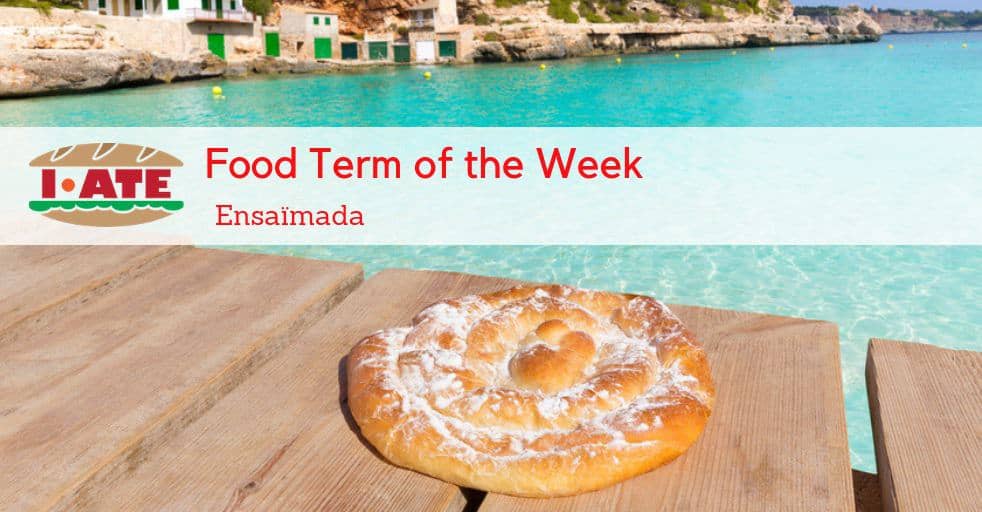
The ensaïmada is a traditional pastry from Mallorca that we can find in the best bakeries in Spain (but mostly in Balearic bakeries). It is an artisan product, with the experience of a professional to give it its special characteristics essential to its taste.
The name comes from one of its main ingredients, pork lard (saïm in Catalan, whilst the French make the distinction between the saindoux -sweet- and the lard -salty-). In addition to the pork lard, other ingredients of the ensaïmada are sugar and fermented and baked dough, made with flour, water, sugar and eggs.
The ensaïmada is perhaps one of the most symbolic items from the island of Mallorca, leaving its imprint on many cultural and gastronomic aspects of the island.
The first written references of this dessert are found in seventeenth-century documents. At this point in time, although the main destination of the wheat flour was for breadmaking purposes, there are documents that mention the preparation of Mallorcan ensaïmadas for festivals and celebrations. But the legend is, is that those who first created this pastry were Muslims. We can’t forget that the Arab invasion in Spain bequeathed, among many other things, a wide assortment of dessert recipes and sweets. In addition, there is in Muslim culture a sweet called bulema, which is in the shape of a snail and has the same ingredients as the ensaïmada except for the lard (which is replaced by a type of butter).
And you can find similar sweets all over the world! For example, Balearic immigrants in general have made the ensaïmada a common sweet in Argentina. Although it keeps its links with the Mallorcan one, it does contain somewhat different spices (anise and even sesame, etc). The city of San Pedro has been declared the National Capital of the Argentinian Ensaimada. Moreover, in Puerto Rico the ensaïmada is known just as mallorca or pan de Mallorca.
Due to the great immigration of citizens from the Balearics to Puerto Rico, many customs were incorporated into the Puerto Rican culture and still endure. The mallorcas (ensaïmadas) can be bought in almost all bakeries and it is probably one of the most common breakfasts foods. Unlike the ensaimadas of Mallorca, they are not usually filled with sweets. They are eaten with powdered sugar or roasted on the grill with ham and cheese as a sandwich.
They can also be found in Philippines, known as ensaymada, which is clearly a relic of the 300-year Spanish occupation of the country.
The recipe of the authentic Mallorcan ensaïmada is so special that obtained its protection as a Specific Denomination in 1996. In April 2003, the government of the Balearic Islands approved the Regulation, currently in force, which recognizes it as a Protected Geographical Indication.
Thanks to this distinction, the recipe of the authentic ensaïmada from Mallorca can be preserved as we know it now for the following years and even centuries, giving the possibility for all its visitors to enjoy this delicious pastry.
Are you interested in food terminology? Check out our section in the web dedicated to them: I-ATE Food Term of the Week !
Sources:
http://www.ensaimada.es/historia.html
https://www.spanish-food.org/desserts-ensaimada.html
https://blog.menorquina.com/el-origen-de-la-ensaimada
http://dle.rae.es/?id=FbWwErv
Written by Marta Guillén Martínez – Communication Trainee at the Terminology Coordination Unit of the European Parliament (Luxembourg). She holds a Degree in Advertising and Public Relations from the University of Alicante, Spain and she did her European Voluntary Service on communication and european youth mobility in Milan, Italy. She speaks Spanish, Catalan, English and Italian.

